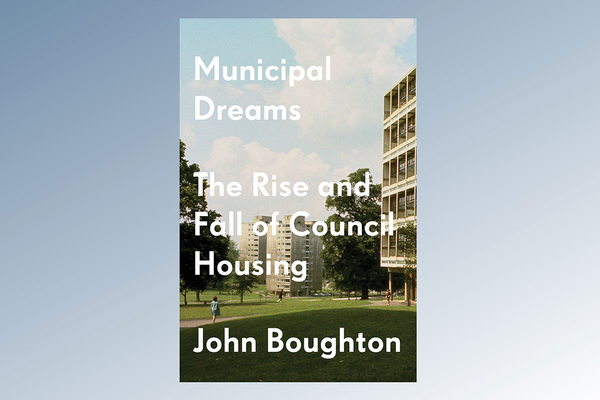
Marking 100 years since the ‘Addison Act’
Next year is the centenary of the Housing Act 1919 which paved the way for large-scale council housing. To mark the occasion, the organisers of a special conference are asking for your research ideas, writes Mark Swenarton
On 11 November 1918, as everyone knows, World War I came to an end.
The following day the prime minister, David Lloyd George, called a general election and promised “habitations fit for the heroes who have won the war”.
This pledge – generally abbreviated to ‘homes fit for heroes’ – marked the start of the nationwide system of council housing that lasted for most of the 20th century.
With Lloyd George’s 1918 election out of the way, legislation followed, with Christopher Addison as minister of health guiding the new Housing Act onto the statute book in July 1919.
“A system of open-ended Treasury grants was introduced to cover their losses… half a million homes were promised.”
Local authorities were charged with building working-class housing in their areas, and to make sure they did so a system of open-ended (yes, really!) Treasury grants was introduced to cover their losses.
Half a million ‘homes fit for heroes’ were promised.
Following the recommendations of the famous Tudor Walters report (1918), these were not to be terraced houses packed into streets on narrow plots, but low-density garden suburbs where generously proportioned houses were set in large gardens – something very different from the typical working-class housing of the time.
Perhaps not surprisingly, Mr Addison’s programme was not carried out in full.
By 1921 the immediate post-war crisis had passed, and in July of that year the programme was axed – limited to houses on which construction had started or for which tenders had been approved (176,000 in England and Wales). But subsequent governments could not simply ignore the housing problem, with the result that the 1920s as a whole became a decade in which local authorities built housing in garden suburbs, following the principles set out in the Tudor Walters report and often using the sites acquired in 1918-20.
To commemorate these momentous events, a conference is taking place on 18 and 19 July at the Institute of Historical Research (IHR) in London.
The Homes fit for Heroes Centenary Conference has been organised by the Learning from 1919 Steering Group, a group of historians and architectural specialists from across the country, in partnership with the IHR.
The conference will explore new historical perspectives on the 1919 Housing Act and the housing that was built under its provisions (and those of subsequent acts in 1923 and 1924), which established the principle of state-subsidised social housing for the next 60 years, as well as wider themes in social/council housing policy and design across the centenary period, and look towards the future of housing in the next century.
The conference themes are:
- New historical perspectives on the 1919 act and the housing that was built under its provisions (and those of subsequent acts in 1923 and 1924), especially proposals that add to, amend or challenge received wisdom about inter-war housing.
- Issues in social housing policy and design across the centenary period, especially the broader themes that have informed housing theory and practice from 1919-2019.
- Looking towards the future of housing in the 21st century – how social housing can and might develop, and/or what might be learned from the previous century.
The call for papers is open until 5 January.
The organisers invite not just academics and independent researchers but also practitioners, policymakers, housing campaigners and members of housing interest groups to submit proposals for 20-minute papers responding to the themes above – the aim being to bring together multi- disciplinary perspectives that reflect on the past, present and future of mass housing.
Of course, what gives the subject particular relevance today is that, for the first time in many years, it looks as though we may be about to start building council housing on a large scale once again.
After four decades of housing policy being dominated by the advocates of private enterprise, even the Conservatives – in the person of prime minister Theresa May – have admitted that the housing market is “broken”, and last month the government lifted the cap on local authority borrowing for housing.
For the first time in decades, talk of a major programme of council housing is no longer fanciful – and looking at what happened with the first nationwide council housing programme is no longer of merely historical interest.
Mark Swenarton, emeritus professor of architecture, University of Liverpool. His 1981 book, Homes Fit for Heroes, was reissued last month.











